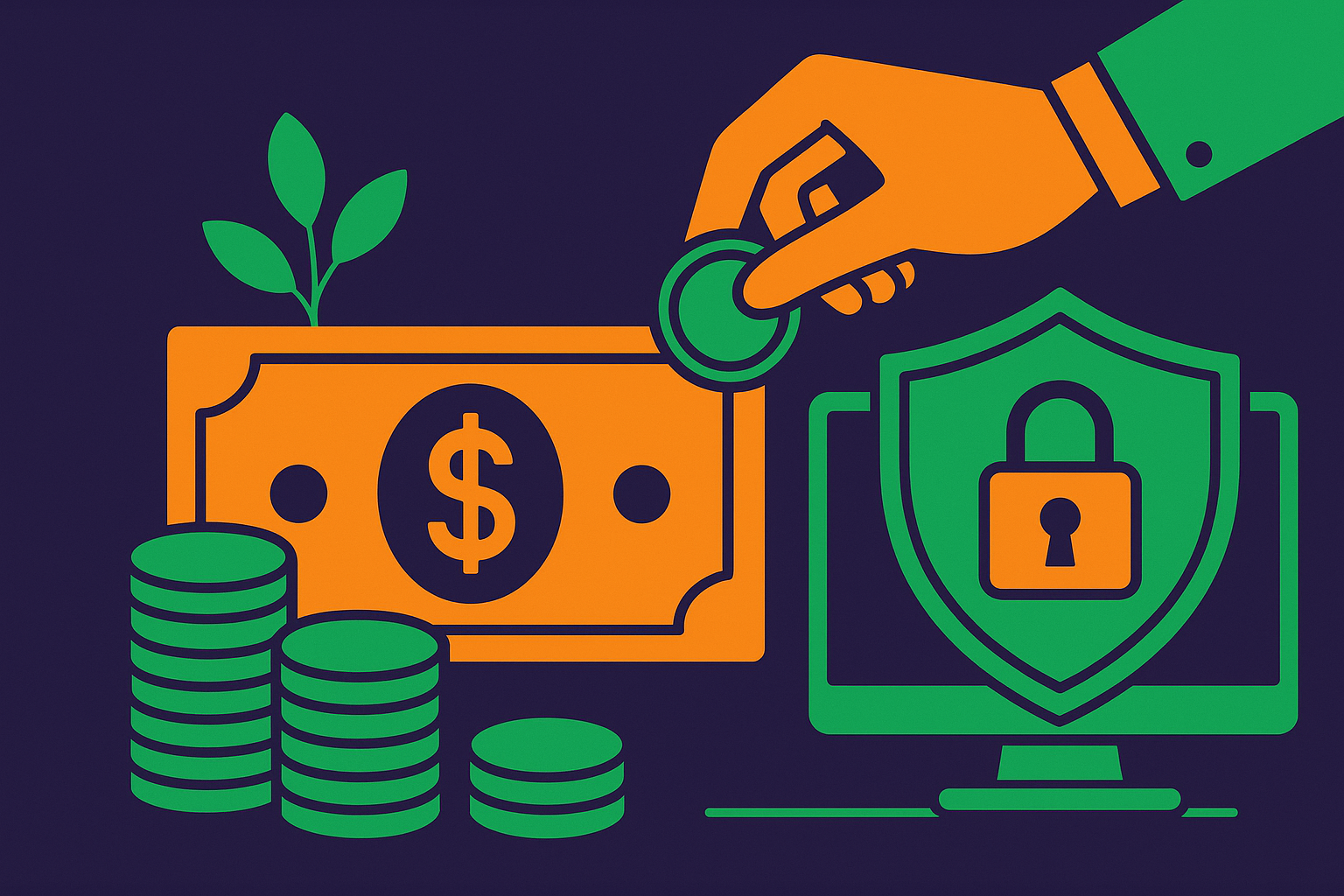Small and mid-sized businesses (SMBs) live in a constant balancing act. You know your business is a target for cyberattacks, studies show that nearly half of all breaches impact SMBs, but your budget is far from unlimited. Every dollar spent on cybersecurity means a dollar not spent elsewhere, so the question becomes: how do you prioritize?
The good news: cybersecurity spending doesn’t need to be overwhelming. With the right priorities, SMBs can build strong defenses without burning through resources.
Step 1: Protect What Matters Most
The starting point for prioritization is clarity. Not all data, systems, or processes are equally critical. A payroll system storing employee Social Security numbers is far more sensitive than an office printer queue.
Action for SMBs:
- Build a simple asset inventory: list out your systems, applications, and devices.
- Rank them by business impact: what happens if this system goes down or data is stolen?
- Protect your “crown jewels” first: customer data, financial systems, and intellectual property.
This ensures your limited budget goes where it makes the most difference.
Step 2: Cover the Security Fundamentals
It’s tempting to jump straight into advanced tools, but for most SMBs, breaches happen because of missed basics. Cybercriminals don’t need zero-days when weak passwords and outdated systems are still so common.
Critical basics every SMB should budget for:
- Strong authentication: Enforce MFA wherever possible.
- Patch management: Keep systems and software up to date.
- Endpoint protection: Use modern antivirus/EDR tools.
- Data backup & recovery: Regular, tested backups can turn a ransomware disaster into a minor hiccup.
These aren’t glamorous, but they prevent the majority of real-world breaches.
Step 3: Invest in People, Not Just Tools
Even the best tools won’t help if employees fall for phishing emails or mishandle sensitive data. For SMBs, security awareness training is one of the highest ROI investments you can make.
Action for SMBs:
- Run regular phishing simulations to keep employees sharp.
- Provide simple, actionable training (don’t overwhelm with technical jargon).
- Empower staff to report suspicious activity without fear of punishment.
A well-trained workforce becomes a frontline defense, often stronger than any software.
Step 4: Validate with Testing
Here’s where SMBs often overlook value. Vulnerability scans are helpful, but they generate noise and don’t show how attacks actually play out. Penetration testing, on the other hand, demonstrates real-world risk by chaining vulnerabilities together into attack paths.
For SMBs, a focused gray-box penetration test is often the sweet spot: affordable, efficient, and directly tied to business impact. It helps you:
- See what attackers could actually achieve.
- Prioritize remediation based on exploitability, not just theoretical risk.
- Build confidence with customers, regulators, and partners.
Testing ensures your budget isn’t just buying tools, it’s buying measurable security.
Step 5: Balance Compliance and Risk
If your SMB operates in a regulated industry (finance, healthcare, legal, etc.), compliance is non-negotiable. But compliance shouldn’t be the only driver of spending. Some controls might be legally required, but not the most effective for your actual threat landscape.
Tip: Treat compliance as a baseline, not the ceiling. Prioritize spending that checks regulatory boxes and reduces real risk.
Step 6: Outsource Smartly
Most SMBs don’t have in-house security teams, and that’s okay. Partnering with a managed service provider (MSP/MSSP) or security firm can give you enterprise-grade defenses at SMB-friendly costs.
Areas to consider outsourcing:
- 24/7 monitoring and incident response
- Penetration testing and vulnerability assessments
- Policy development and compliance support
Outsourcing doesn’t remove accountability, but it can dramatically extend your team’s capabilities without adding headcount.
Step 7: Measure and Adjust
Cybersecurity is not “set it and forget it.” Attackers evolve, your business changes, and priorities shift. Treat your cybersecurity budget like any other investment, track results, and adjust.
Metrics to track:
- Time to patch vulnerabilities
- Employee phishing test success rate
- Incident response times
- Number of validated critical vulnerabilities found during testing
By measuring, you ensure dollars are going where they have the most impact.
Final Thoughts: Spend Smart, Not Big
For SMBs, effective cybersecurity isn’t about outspending attackers; it’s about outsmarting them. That means prioritizing what matters most, covering the fundamentals, training your people, and validating your defenses with real-world testing.
When every dollar counts, a focused and strategic approach can protect your business as effectively as the big budgets of larger enterprises.
MainNerve specializes in helping SMBs get maximum impact from their cybersecurity spend. From penetration testing to compliance support, we’ll help you protect your business without wasting resources. Contact us today to start building smarter security.



